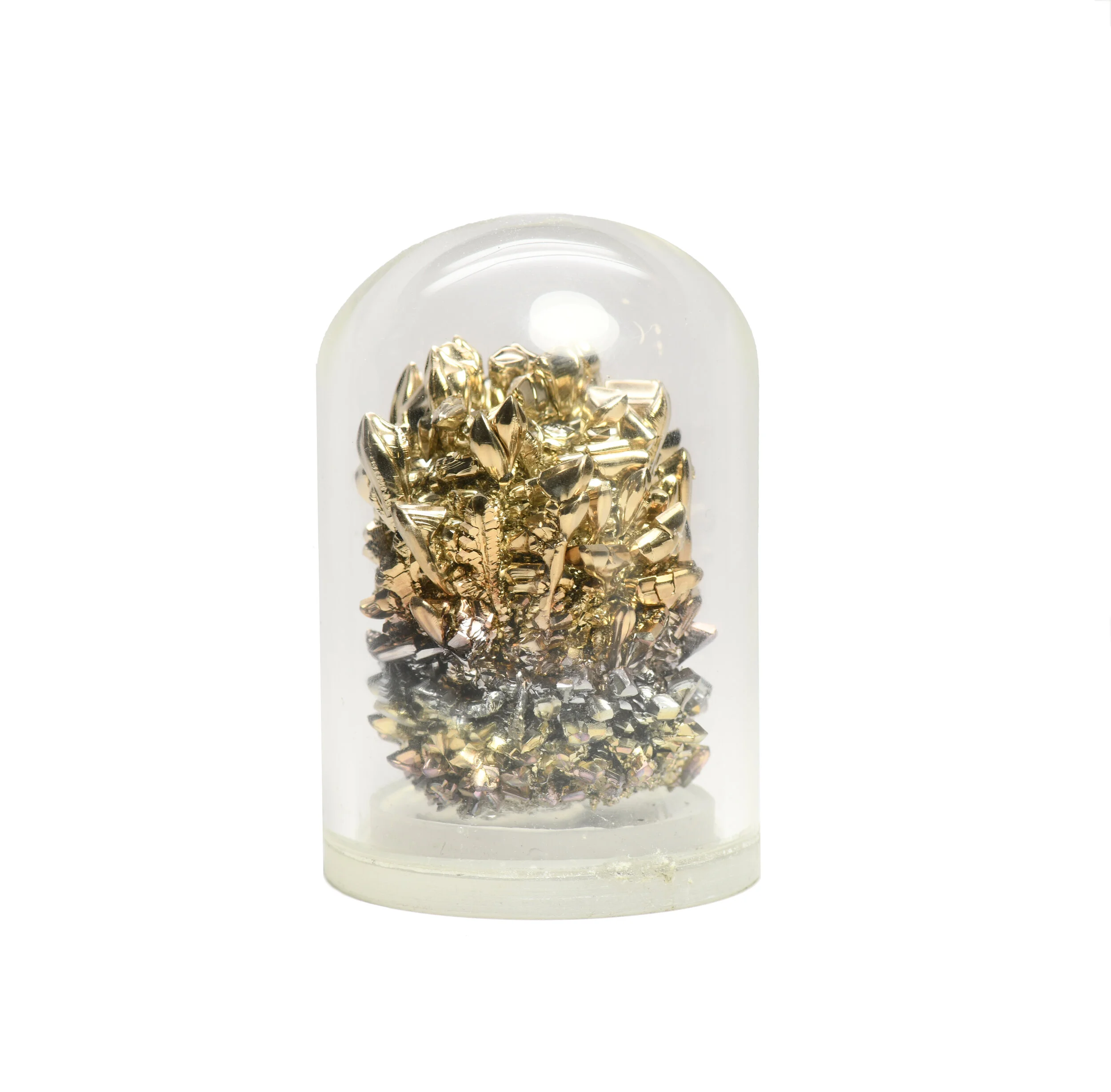Strontium
Strontium
As you can see in this photo strontium can be dazzlingly beautiful but it’s a fleeting, almost unattainable beauty. The metal ranks among the most fragile and vulnerable to corrosion. The light brassy color is an unintended artifact and testament to this fragility. Even very sophisticated glove boxes will be unable to catch every single errant O2 molecule. Ready for some math? I’ll make it easy, promise.
To calculate the number of oxygen molecules in a given unit of air we’re told we need to start by multiplying its density times the Avogadro’s number then divide that by its molar mass. Off to the Googles and we get the handy formula of 1.225 x 6.022*10^23 / 29. And that works out to the incomprehensibly ridiculous number of 2,543,770,000,000,000,000,000,000 air molecules in a cubic meter of air. Now, since we are sensible people, we should scale down to a more manageable cubic millimeter. Chop nine of those zeroes off. And then we need to remember that oxygen makes up only 20% of air so let’s reduce the number by a further 80%. Finally, let’s say that our lab has a totally badass glove box that can get oxygen levels down to one part per billion. And you know what? If my calculator didn’t go whack that still leaves us with over 5 million oxygen atoms in every cubic millimeter of space inside that dome. Easily enough to change the shade of that surface to a lovely golden tone.
This is by far the loveliest sample of this element we could ever hope to get. Cut a piece of strontium and the initially shiny gray surface will in a matter of hours turn to the color of poorly healing scabs. Quite possibly the least attractive of anything else on the periodic table. But behind this dome that big crystal will remain a thing of breathtaking beauty for as long as the glass and its seals don’t break.

